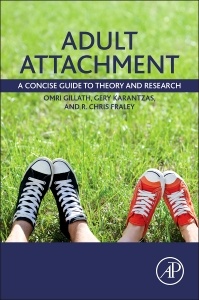Description
Adult Attachment
A Concise Introduction to Theory and Research
Authors: Gillath Omri, Karantzas Gery C., Fraley R. Chris
Language: English
Subject for Adult Attachment:
Keywords
Attachment theory; security; anxiety; avoidance; priming; relationships; development
56.19 €
In Print (Delivery period: 14 days).
Add to cartSupport: Print on demand
Description
/li>Contents
/li>Readership
/li>Biography
/li>Comment
/li>
Adult Attachment: A Concise Introduction to Theory and Research is an easy-to-read and highly accessible reference on attachment that deals with many of the key concepts and topics studied within attachment theory. This book is comprised of a series of chapters framed by common questions that are typically asked by novices entering the field of attachment. The content of each chapter focuses on answering this overarching question.
Topics on the development of attachment are covered from different levels of analysis, including species, individual, and relationship levels, working models of attachment, attachment functions and hierarchies, attachment stability and change over time and across situations, relationship contexts, the cognitive underpinnings of attachment and its activation of enhancement via priming, the interplay between the attachment behavioral system and other behavioral systems, the effects of context on attachment, the contribution of physiology/neurology and genetics to attachment, the associations/differences between attachment and temperament, the conceptualization and measurement of attachment, and the association between attachment and psychopathology/therapy.
TEDx talk: The Power of (Secure) Love by Omri Gillath: https://youtu.be/PgIQv-rTGgA
1. What is attachment? 2. What Is an Attachment Relationship?3. How do Individual Differences in Attachment Develop?4. What are Attachment Working Models?5. How are Individual Differences in Attachment Measured?6. How Stable are Attachment Styles in Adulthood?7. What Can Social Cognition and Priming Tell us About Attachment?8. What is the Attachment Behavioral System? And, how is it Linked to Other Behavioral Systems?9. What are the Effects of Context on Attachment?10. What can Neuroscience, Genetics, and Physiology Tell us About Attachment?11. What are the Implications of Attachment Processes for Psychopathology and Therapy?
Gery C. Karantzas is a Senior Lecturer in the School of Psychology at Deakin University. He is currently the convenor of the Australian Psychological Society (APS) Psychology of Relationships Interest Group. He has published numerous studies in the area of close personal relationships with a specific interest in investigating couple and family relationships during transitions and in adult attachment. He received his PhD from La Trobe University in 2008. His research activities have been funded by grants from the Australian Research Council, the National Health and Research Medical Council, the Academy of Social Sciences in Austra
- Uses a question-and-answer format to address the most important topics within attachment theory
- Presents information in a simple, easy-to-understand way to ensure accessibility for novices in the field of attachment
- Covers the main concepts and issues that relate to attachment theory, thus ensuring readers develop a strong foundation in attachment theory that they can then apply to the study of relationships
- Addresses future directions in the field of attachment theory
- Concisely covers material, ensuring scholars and professionals can quickly get up-to-speed with the most recent research
These books may interest you

Attachment Theory and Psychoanalysis 160.25 €



